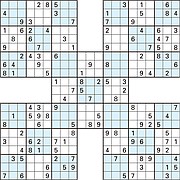LAKE WYLIE, S.C. (AP) - Relatively small errors by surveyors using stakes, hatchets and mental arithmetic 240 years ago could mean the end of Victor Boulware's tiny convenience store.
For decades, officials thought the land where the store sits was in South Carolina, because maps said the boundary with North Carolina drawn back in the 1700s was just to the north.
But modern-day surveyors, using computers and GPS systems, redrew the border to narrow it down to the centimeter. Their results put the new line about 150 feet south of the old one and placed Boulware's Lake Wylie Minimarket in North Carolina, where the gas prices are 30 cents higher and the fireworks that boost his bottom line are illegal.
"If I end up across the line, it is going to shut this business down," Boulware said.
On a recent weekday, nearly every car stopping to get gas or a snack had a North Carolina license plate. The $3.59 per gallon price was the only reason Aaron Taule of Belmont, N.C., stopped.
For most of the 14 million people in both Carolinas who live far from the state line, the new survey is an interesting tale that might bring up a joke or two. Will the people who suddenly find themselves in North Carolina have to start liking basketball more than football or renounce mustard-based barbecue sauce in favor of the styles preferred to the north?
But for the owners of 93 properties who suddenly find themselves in another state, it's a bureaucratic nightmare. The state line determines so much in their lives - what schools they go to, what area code their phone number starts with even who provides them gas and electricity. Small utility cooperatives in South Carolina are banned from extending services across the state line. Most of the properties in question are near Charlotte, N.C.
"I'm having a hard time being funny about this when mysterious forces bigger than you are shoving you around," said Frederick Berlinger, who suddenly has been told he goes to bed at night in Spartanburg County, S.C. after 15 years in what he thought was Polk County, N.C.
He studied maps when he bought more than 60 acres of land in the mid-1990s. About two-thirds was in South Carolina, but he picked the spot for his home in North Carolina. Or at least he thought he did.
The problems for Berlinger and the other property owners began before the United States was even a country, when the king of England sent surveyors to draw a boundary between the two Carolinas. His instructions in 1735 were explicit: Start 30 miles south of the mouth of the Cape Fear River and have surveyors head northwest until they reached 35 degrees latitude. Then the border would head west across the country to the Pacific Ocean. But the surveyors didn't follow the instructions exactly, and future instructions led to the state line's twists and turns around Charlotte and in the mountains.
The surveyors used poles and measured chains, determining what direction to head from the sun and stars, doing math in their heads, and putting hatchet blows on trees to mark the boundary. Over time, those trees disappeared, but the state line still needed to show up on maps.
For decades, mapmakers and officials in both North Carolina and South Carolina urged their states to revisit the line. The U.S. Congress set the boundary as the instructions given out by the king, not the line on subsequent maps.
"This should have been done decades ago before all this growth. People called us, we're supposed to be the authorities on the state line and all we could say is we don't know for certain," said Sidney Miller, who is helping lead the survey for South Carolina.
This survey is designed to put almost all questions about where the line is drawn to rest. The boundary will be recorded with GPS coordinates and permanently marked with stakes and stones driven into the ground.

